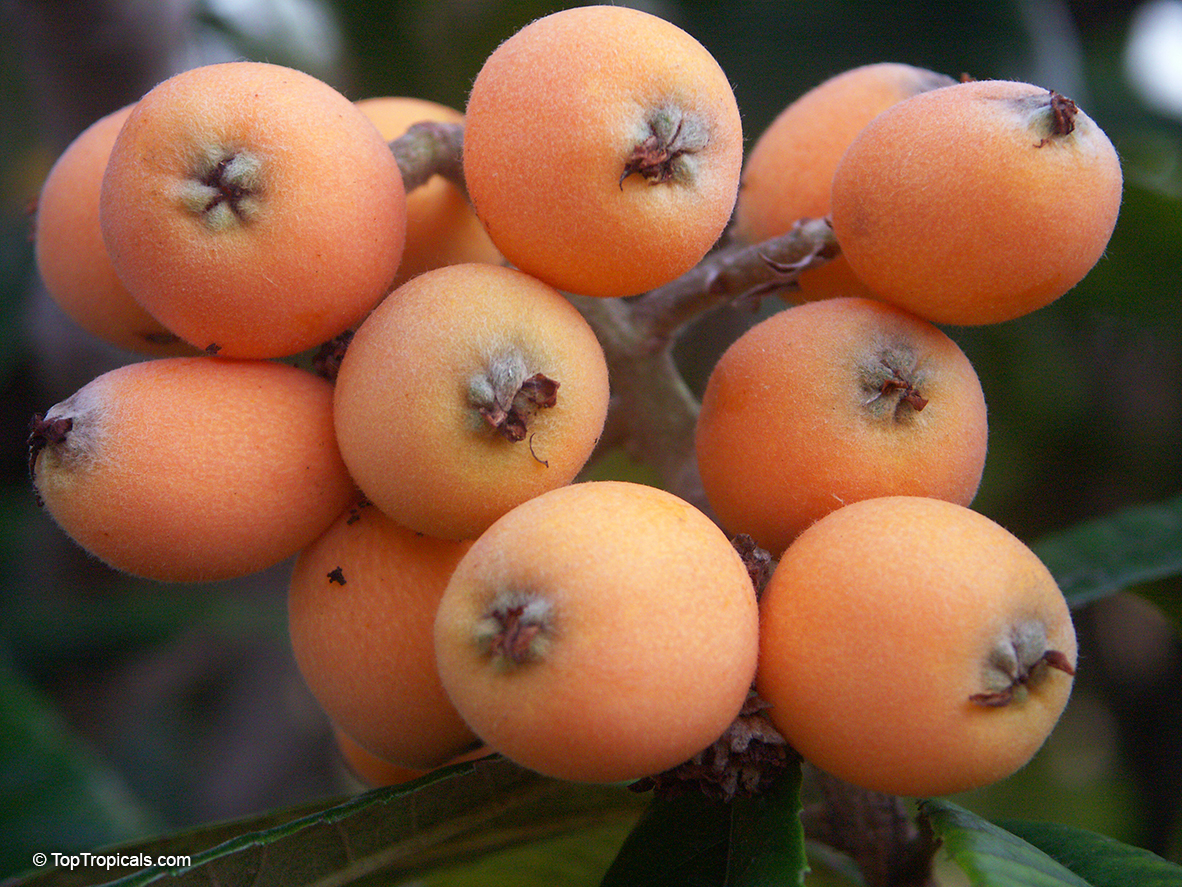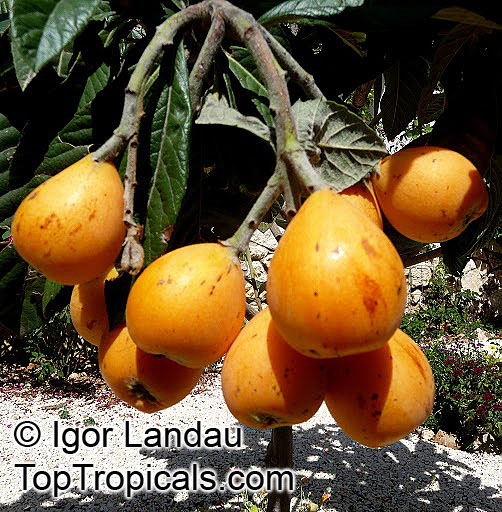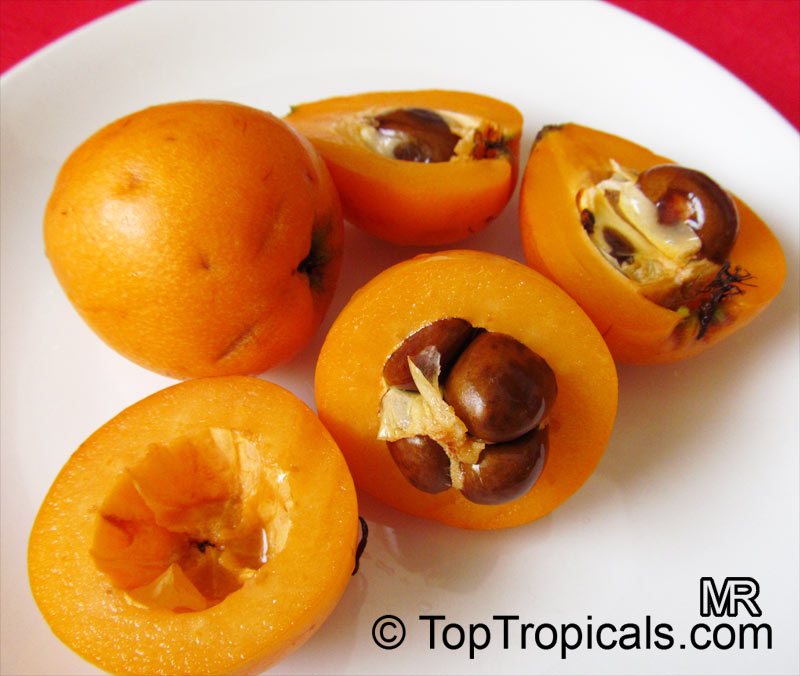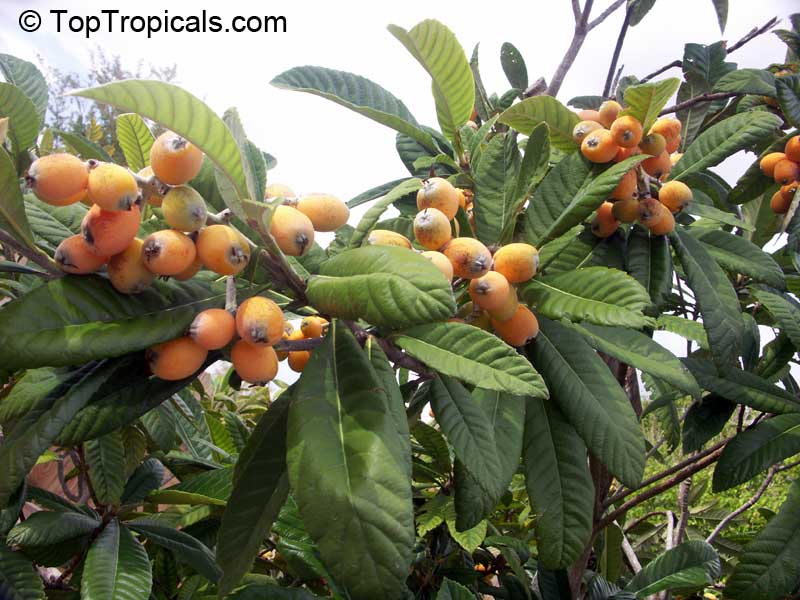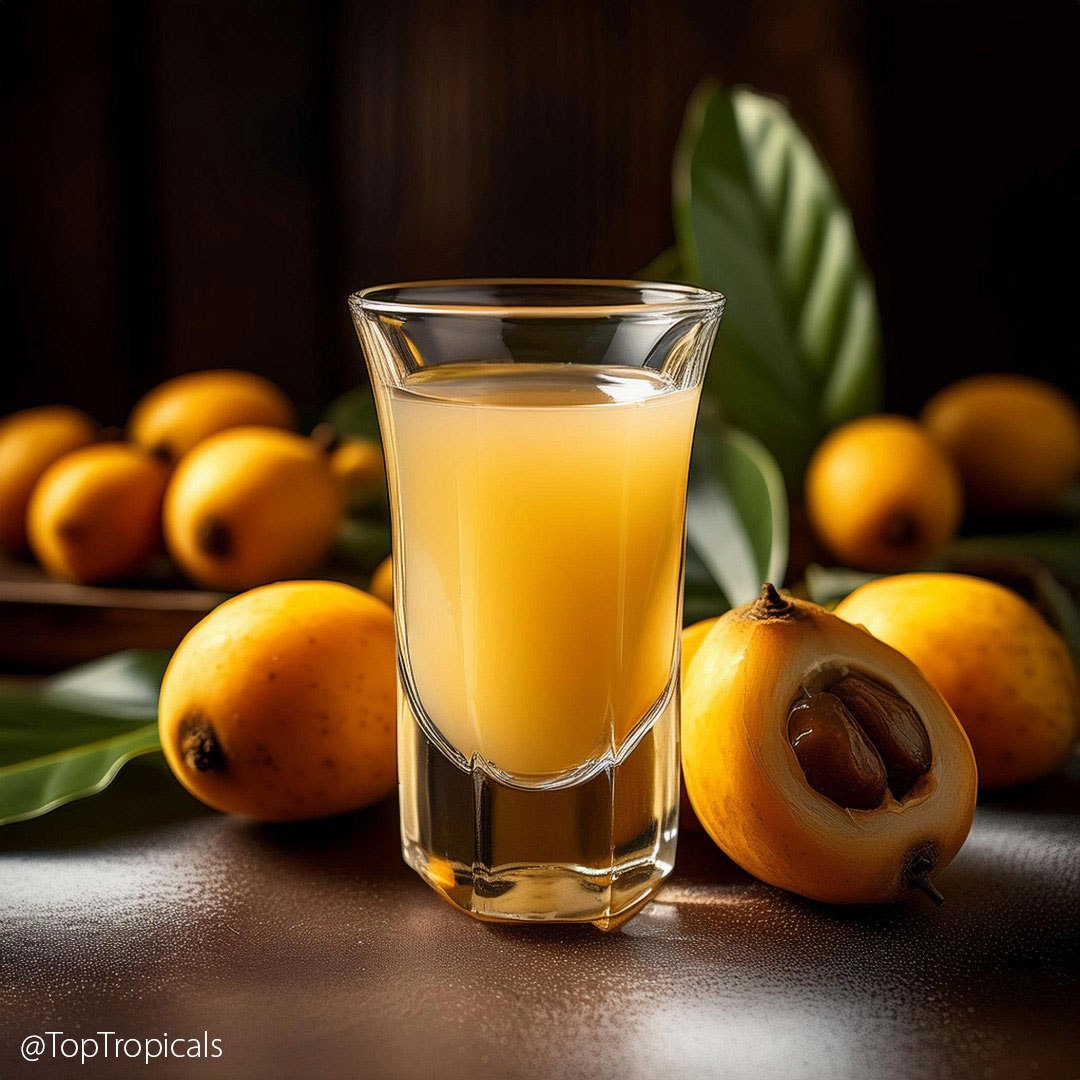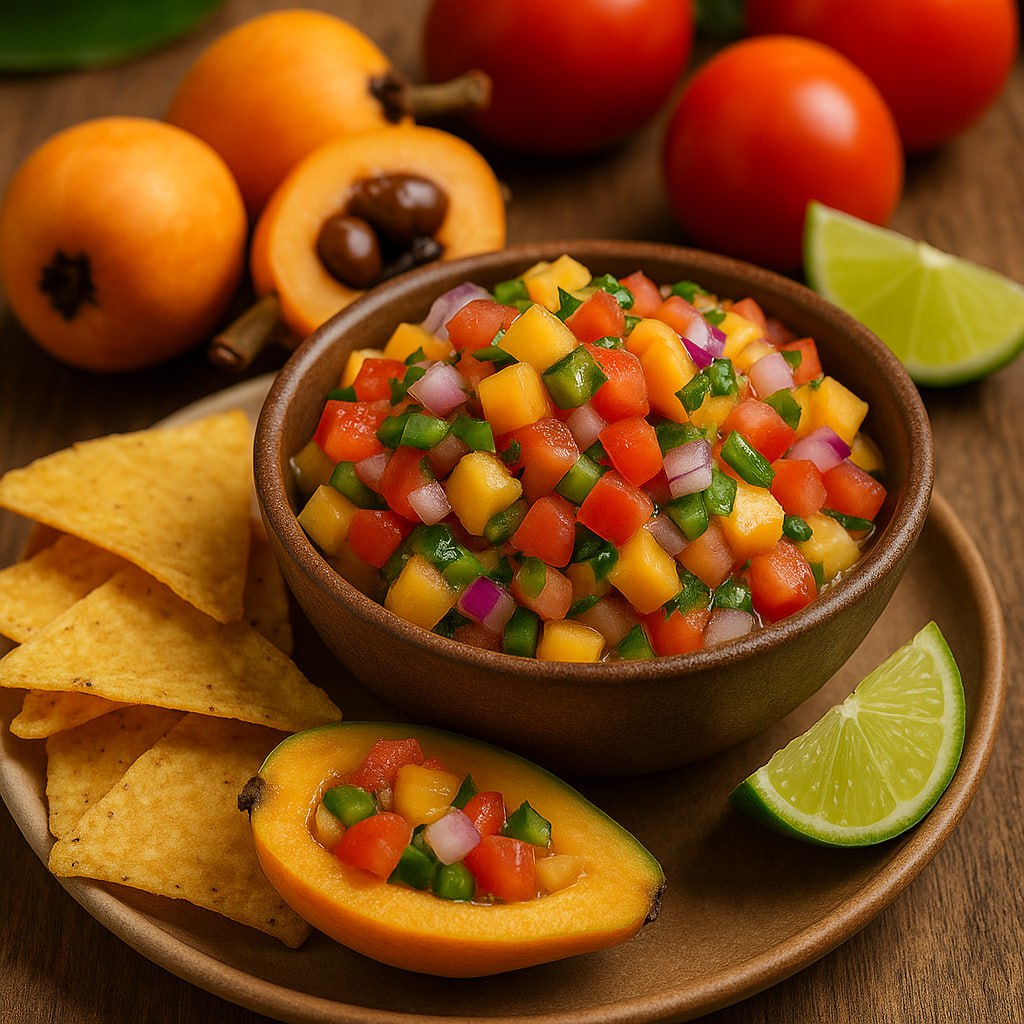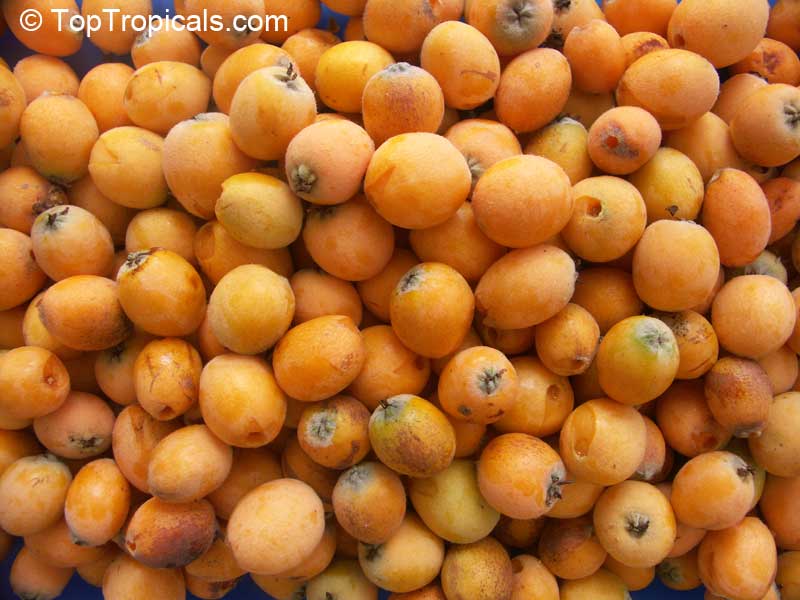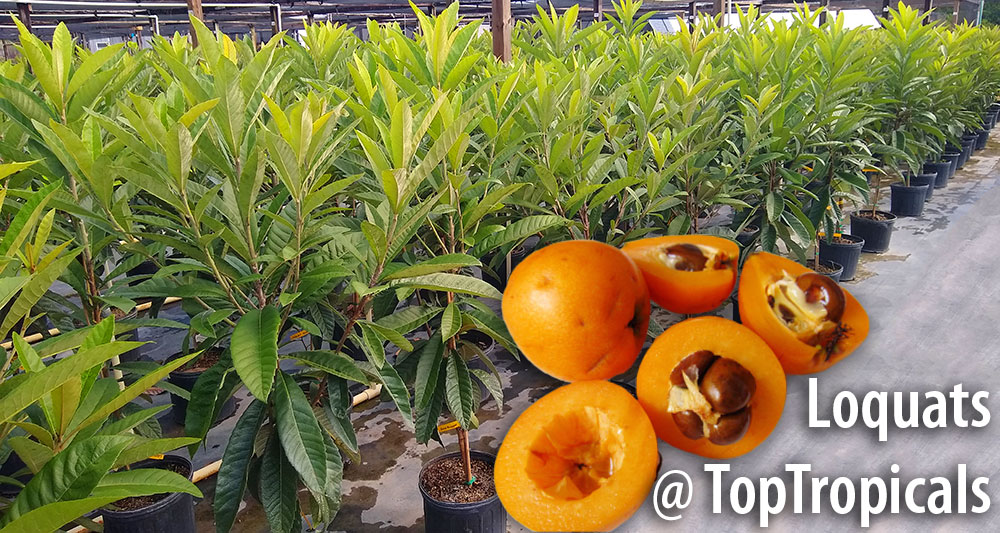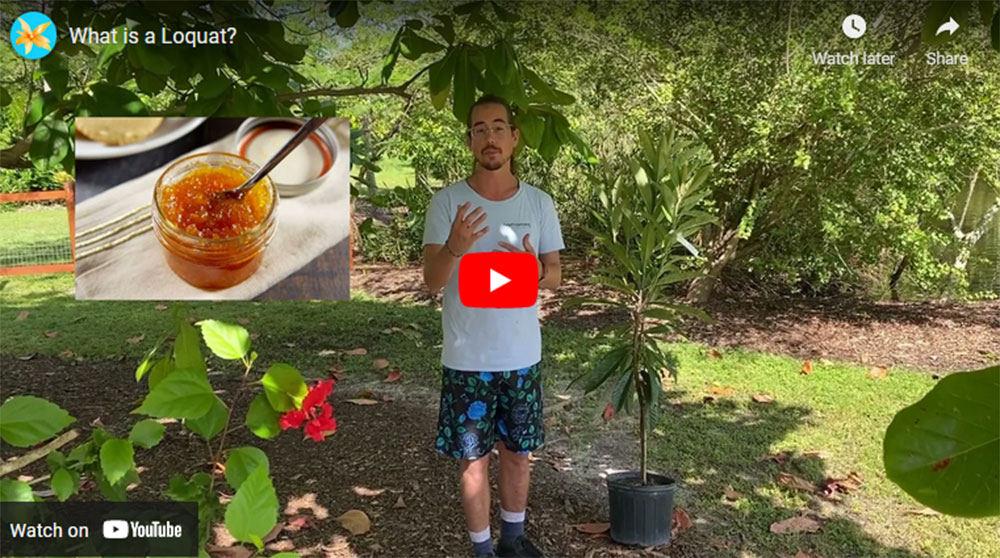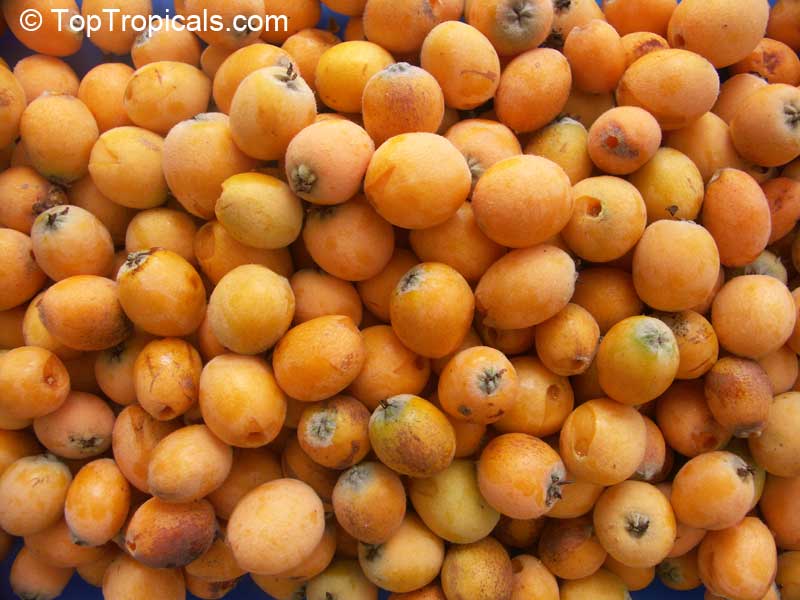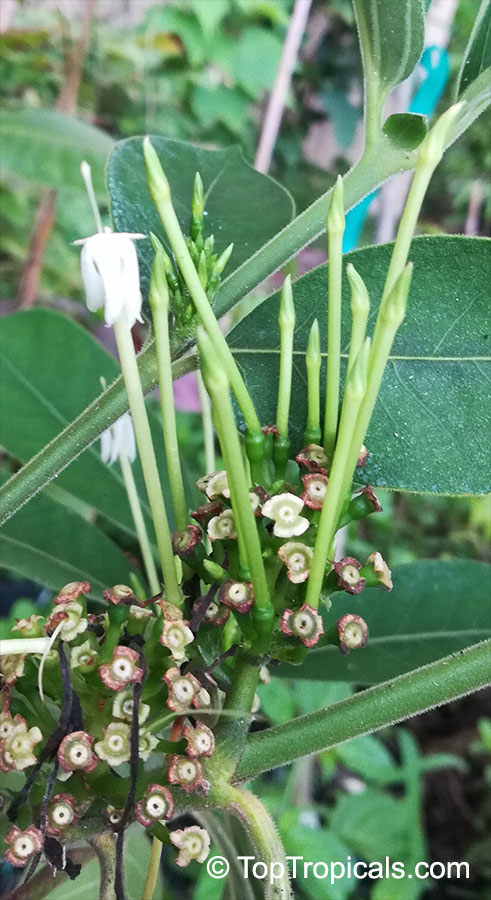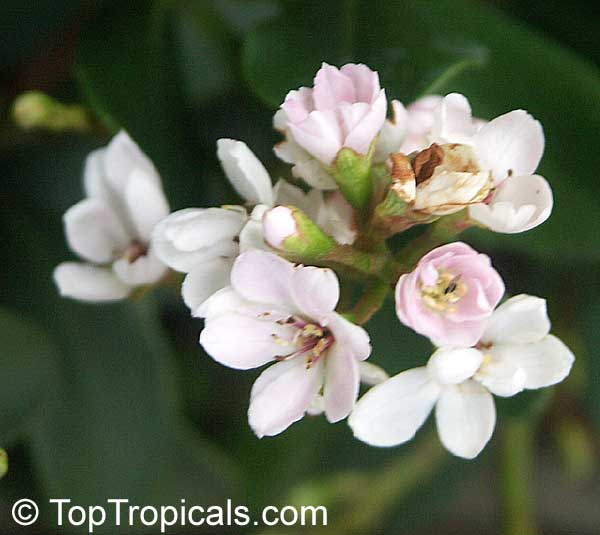When you are in the mood for something special - you need a Loquat Liquor
🍑 Loquat tree is an excellent choice for any garden, as it is quite cold hardy, drought-, poor soil- and salt tolerant. The delicious fruit look and taste similar to apricots, but there is only one problem: there are too many of them! Make Loquat the perfect fruit for an easy home winery...
🍹 Loquat Liquor recipe
Wash loquat fruit and slit in 4-5 places. You may leave seeds in for Apricot-nutty flavor similar to Amaretto. Combine fruit with vodka and sugar in a wide mouth jar and cover. Stir fruit once a day until sugar is dissolved. Then stir once a week for 4 weeks. Drain liquid and strain through fine cheesecloth. Enjoy!
You can dispose the used fruit but we usually give it a second life: add water, bring to boil, let sit, chill, and it will make another (almost non-alcoholic) drink!
✔️ 3 quarts of loquat fruit- ✔️ 1 quart vodka
- ✔️ 3 cups sugar
- ✔️ vanilla to taste (optional)
📚 From previous posts:
🎥 YouTube video about Loquat
📁 Overlooked fruit: tasty Loquat recipes (PDF)
🛒 Shop Loquat varieties
#Recipes #Food_Forest #Loquat
🔴 Join 👉 TopTropicals
Loquat salsa: quick-n-fun exotic recipes
🔴Dice Loquat fruit with tomato, onion, and jalapeno.- 🔴Great spooned over grilled fish or eaten with chips.
Loquat Salsa Recipe
Ingredients
- 2 cups fresh loquats, peeled, pitted, and diced
- 2 medium tomatoes, diced
- 1/2 medium red onion, finely chopped
- 1 jalapeno, finely diced
- 1/4 cup fresh cilantro, chopped
- Juice of 1 lime
- Salt to taste
Instructions
- Peel and pit the loquats, then dice them into small cubes.
- Dice tomatoes and onion, finely chop the jalapeno.
- In a bowl, combine loquats, tomato, onion, jalapeno, and cilantro.
- Add lime juice and salt to taste, stir gently to mix.
- Chill for 15 minutes before serving.
Serving Suggestions
- Serve with tortilla chips.
- Spoon over grilled fish, chicken, or shrimp.
- Use as a topping for tacos or salads.
🛒Plant your Loquat tree
#Food_Forest #Recipes #Loquat
🟢 Join 👉 TopTropicals
From seed to fruit. How to grow Loquat from seeds, step-by-step guide. Part 2: after germination
Continued from previous posts⤴️
- 🍑 4. Transplanting Seedlings
- ▫️When to Transplant: Once seedlings reach about 2-4” (5-10 cm) in height.
- ▫️Transplanting and fertilizing: Move each seedling to its own pot and add controlled release fertilizer (Green Magic is the best), or use liquid balanced fertilizer Sunshine Boosters after 1-2 weeks once the seedlings establish.
- ▫️Watering. Keep soil in a pot slightly moist but not soggy
- ▫️Temperature. Keep seedling warm - above 70F (21C), and protect from extreme heat over 90F (35C) . For small plants, avoid freezing temperatures during winter. As the seedlings get bigger, they get higher drought-, heat- and cold tolerance. Established Loquat trees (2-3 years and older) may take light freezing temperatures.
- ▫️Planting in the ground. You can plant the seedling in the ground when it reaches 2-3 ft tall (50-100 cm) in frost-free areas. During chill winter nights, young seedlings can be cold protected until established.
- 🍑 5. Sunlight Requirements
- ▫️Light Exposure: Loquat established seedlings thrive in full sun but can tolerate partial shade. Start seedlings in bright shade and protect from afternoon hot sun to avoid leaf burn. Once seedlings are established and new growth appears (2-4 weeks), gradually move them to full sun.
- ▫️Why adequate sunlight (full sun) is important:
- promotes healthy growth
- helps to avoid fungus and insect problems
- is critical for future flowering and fruit production
🍑 6. Fruit production
- ▫️Loquat seedlings start producing seed within 3-4 years from seed, providing adequate sunlight, warm temperatures and regular irrigation.
- ▫️Grafted Loquats start producing right away or the next year
- ▫️Fruit will develop over the winter and ripen from March through May depending on location
🛒 Shop Loquat Trees and enjoy fresh fruit benefits
📚 Learn more:
- 🟡about #Loquat
- 🟡A young Loquat tree is fruiting
- 🟡Ten best fruit trees to grow in Florida and Southern landscapes. # 10: Loquat Tree
- 🟡Loquat – the Symbol of Prosperity
- 🟡Learn more about Loquats
- 🟡10 best fruit trees to grow in Florida and Southern landscapes
🎥 YouTube video about Loquat
📁 Overlooked fruit: tasty Loquat recipes (PDF)
#Food_Forest #Loquat
🔴 Join 👉 TopTropicals
Date:
Grow your own food:
How hardy is a Loquat tree?
Q: I am looking for a fruit tree for my backyard that is low maintenance, fast fruiting, and can take some cold (I live in Orlando FL and we do get occasional frost in winter). I like the taste of Loquat fruit, it reminds me of apricots. How cold hardy is this tree?
A: Loquat tree is a very good choice for Florida gardens. It can
take both cold and heat and produces lots of tasty fruit right away. Last
winter when we had a record freeze in our area with a couple of nights around
25F, the only trees that didn't get any damage at all were Loquats and
Macadamias, and those were still young, newly planted 4 ft trees.
To learn more about Loquat trees, check out this
and article: Golden Loquat - the symbol of Prosperity.
Eriobotrya japonica
Family:Rosaceae
Loquat, Japanese Plum, Nispero
Season: January to April. Small, well-shaped tree. Large 12 long, stiff leaves, dark green above, whitish underneath. Yellow to orange color fruit, somewhat pear-shaped, 2 long and 1 1/2 across with 1 to 3 seeds. Eaten fresh, in jellies and wines. Moderate growth, salt tolerant. Fruit may be thinned to increase size. Many varieties. The loquat should really be used more, the fruit is especially good... more
More to read:
- PDF download. Overlooked fruit: tasty Loquat recipes. (from Tropical Treasures Magazine).
Close window
Ficus saussureana, Ficus afzelii, Ficus eriobotryoides, Ficus princeps
Family:Moraceae
Loquat Leaf Fig
See detailed plant profile in new window: https://toptropicals.com/catalog/uid/ficus_saussureana.htm
Oxyanthus sp.
Family:Rubiaceae
Whipstick Tree, Wild Coffee, Zulu Loquat, Sand-forest Afro-loquat
Oxyanthus sp. (Whipstick Tree) is a fascinating plant native to South Africa. It is a large shrub or small tree, reaching a height of 5 - 10 ft tall if grown as a shrub and 10 - 20 ft tall when grown as a tree. It has horizontal branches, resembling a large bush with a rounded canopy.
In warm climates it prefers full sun, though it will tolerate some light shade. It has a moderate water requirement, preferring regular deep soakings to keep the soil evenly moist. Each season is rewarded with fragrant, greenish-white, off-white flowers borne in dense heads of long slender corolla tubes. The blooms are showy and often bring an array of people to the garden. The flowers are followed by orange-yellow fruit.
The Whipstick Tree can be grown in pots in colder climates, however, drainage must be a priority as plants living in pots dry out more quickly. If grown in a pot, it should be placed in a sunny location and kept moist. As its water requirements are low it is a great choice for containers in drought prone areas or when water restrictions apply.
This striking evergreen can grow in USDA hardiness Zones 9-11, if provided with well-drained soil and plenty of sun. It is a hardy plant, tolerant of both heat and drought once established. Overall, it is a low-maintenance design and offers an abundance of color and structure with its unique foliage all year round.
See detailed plant profile in new window: https://toptropicals.com/catalog/uid/oxyanthus_sp.htm
Rhaphiolepis sp.
Family:Rosaceae
Yeddo Hawthorn
Rhaphiolepis are low growing, spreading evergreen shrubs with thick, leathery, serrated, oblong leaves. They are dark green on top and lighter on bottom. Star shaped flowers are held at branch tips in loose clusters and are white or light pink, with five petals, and may be lightly fragrant. Flowers are followed by blue-black fruits with 1 or 2 seeds and provide food for birds. Must have well drained
... more
The genus is closely related to Eriobotrya (Loquats), so closely in fact, that members of the two genera have hybridised with each other.
Close window
Detailed plant profiles: 4 plants found
